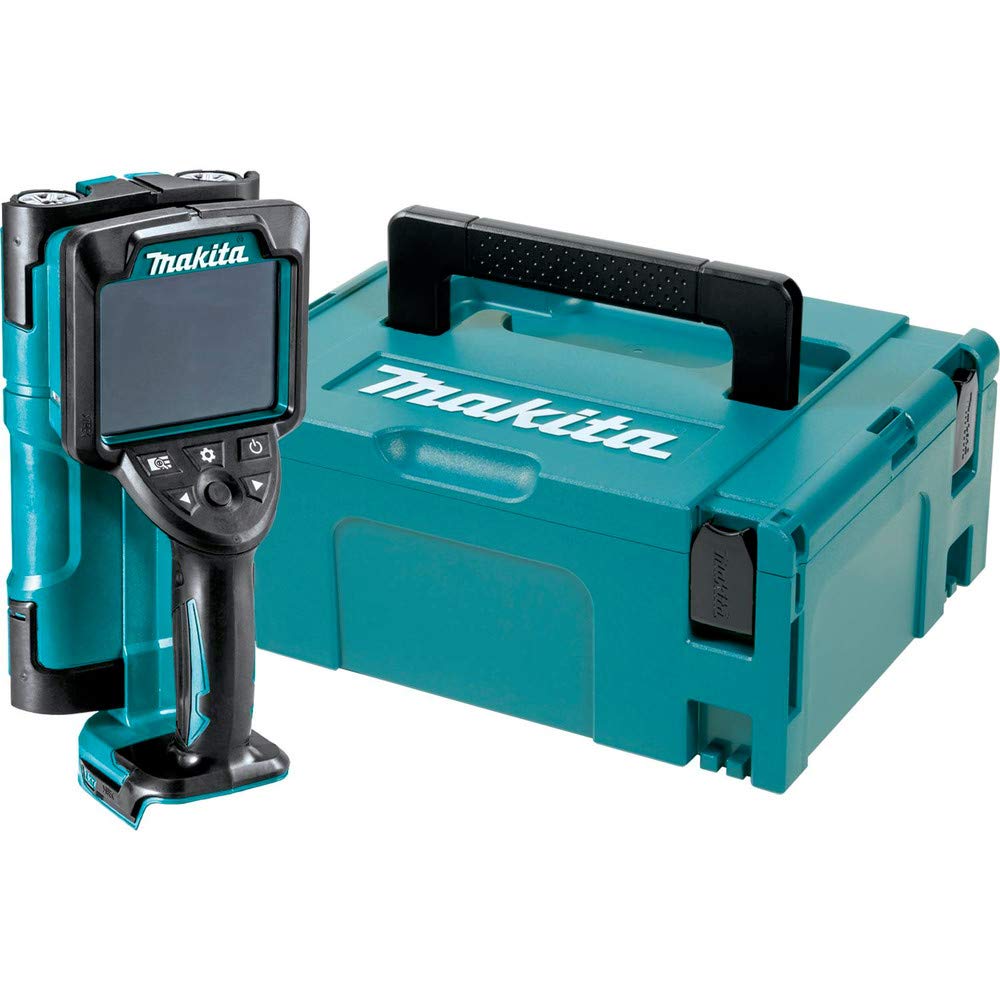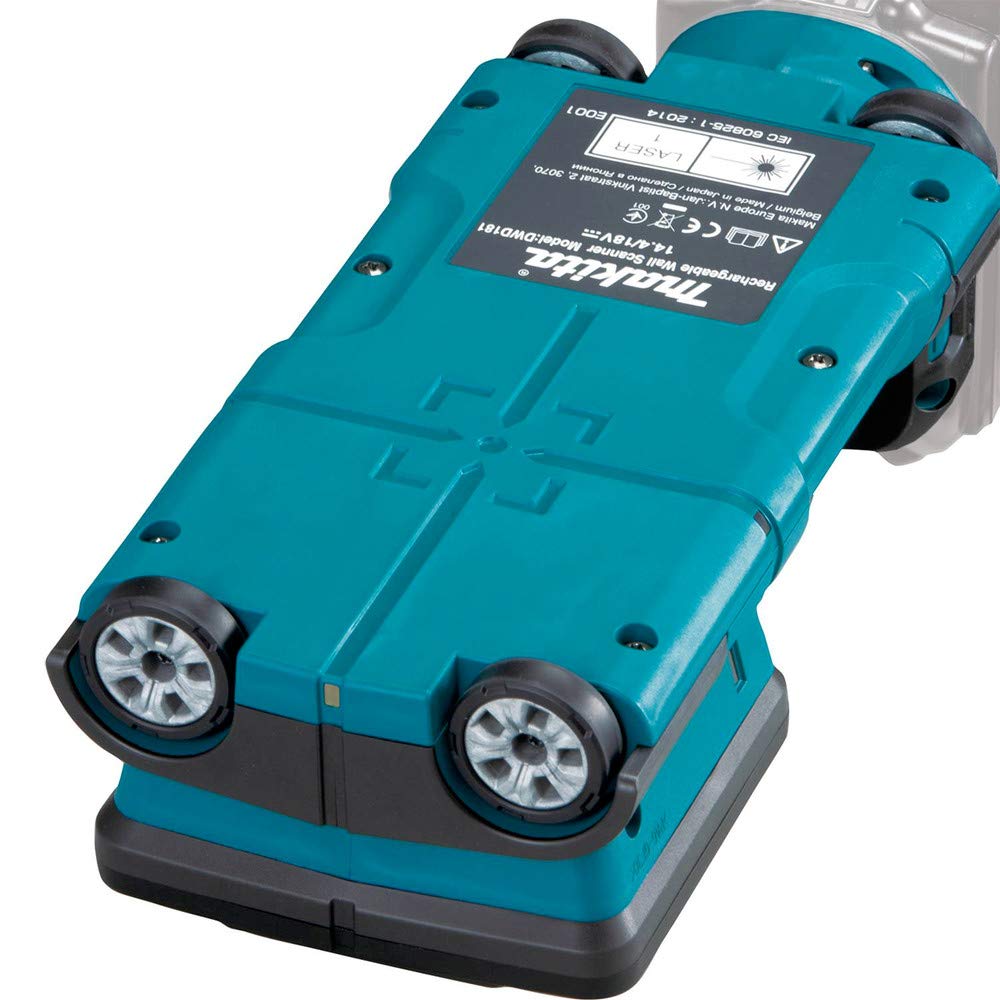








🔧 Unleash Your Inner Pro with Precision Scanning!
The Makita DWD181ZJ is a powerful 18V cordless multi-surface scanner designed to quickly locate embedded objects in various materials, including metals, wood, and plastic, up to 7 inches deep. With a user-friendly interface and versatile scanning modes, this tool is perfect for professionals seeking efficiency and accuracy in their projects.
| Manufacturer | Makita |
| Part Number | DWD181ZJ |
| Item Weight | 3.74 pounds |
| Product Dimensions | 11.81 x 15.72 x 6.3 inches |
| Item model number | DWD181ZJ |
| Batteries | 1 A batteries required. |
| Is Discontinued By Manufacturer | No |
| Color | Teal |
| Power Source | Battery Powered |
| Voltage | 18 Volts |
| Wattage | 50 watts |
| Item Package Quantity | 1 |
| Included Components | Interlocking Case |
| Batteries Included? | No |
| Batteries Required? | Yes |
| Battery Cell Type | Lithium Ion |
| Warranty Description | 3-year limited warranty with 3-day repair on Fastlane Express Service |
M**E
it really works, but…
update: I was on makita site looking for more information and I realized there was a manual that should have come with the tool. Talk about simplifying the process…i’m not much for manuals, but this one is a must or at least saves a lot of trial and error, bumbling around. So if you get one without a manual - head to makita’s website and read it first.There is hardly any documentation and learning to interpret what it tells me is probably the bigger issue. I am also color blind, but truthfully don’t know whether that matters or not. I have to say that if makita made a 10 minute video on interpreting results, this would be worth six stars! The impetus for buying this came with me needing to try and locate a drain line in a concrete slab to tie into. Yes I could just start jack hammering, but all the duct work and some of the electrical is buried in the slab as well as the plumbing. The last thing I want to do is make a nightmare out of a bad dream.So what I have done, is started using it where I know there are stuff in the slab. Like next to a register where I know duct work ties in. Unexpectedly, the duct work doesn’t make a dot, but you can see the void in the concrete. Amazingly, this slab has welded wire and the machine actually measures the spacing. I have figured out that the dots are not to scale - which was my initial quandary - is it rebar or is it refrigerant piping??? I can tell one by depth and secondly because of the repeating pattern.I have also found that a dim room makes the tool much easier to read the subtleties of the display. in radar mode it doesn’t display the depth. I believe that the display from top to bottom represents a cross section of the slab from top to bottom, sort of like a slice from an MRI and not an x-ray like I originally anticipated.The last picture is in “panel mode.”. There is a 3” copper pipe at this location which is indicated by the bright display. in panel mode studs seem to appear as a dull linear artifact.As I said, I think there is quite a bit that an experienced user could tell me and with trial and error, I hope to get there. it really is an amazing piece of tech…however, 5 years from now it will probably look like an Atari 2600 as opposed to a PS5😊.
H**E
NOT CLEAR -Penetration Overacted.
It was suppose to scan through wood, and penetrate at least 4 inches. It didn't. I was hoping to find my floor joists. I think it found something but the images where not clear. The wood floor was 1-1/4 inch plywood. I had no confidence in the device. I tried to find my roof joists but the results were worse. It would not scan through composition roof tiles and 5/8 inch thick plywood. The directions did not address any of these, what I thought was common things the homeowners would scan for. I particularly wanted to find my roof joists as I am adding solar. There is really nothing out there to scan for roof joists that I could find.
M**.
Shame it doesn't have discrimination, deal-breaker!!
UPDATE: Don't bother, NEW D-Tect 200 SUPERIOR for SAME PRICE!I'm partial to Makita products. Most every power/li-ion tool I posses is Makita as a professional contractor. I'm afraid they missed the mark with this "multi-surface" scanner though. While is does a fine job locating anomalies and the interface is terrific, it has NO discrimination, it gives no indication as to the material detected below/behind the surface. A perfect example for comparison is the Bosh D-Tect 150, It identifies ferrous/non ferrous metal, wood/ABS and most important, live/electrical....A MUST, especially when you're talking a $1,300 price-point. The D-Tect is the logical purchase at $800 NEW here on Amz (currently jacked-up to $949) You just can't sacrifice the flexibility/usability of the "long-time" Bosh unit, which does a tremendous job on all surfaces, for the love of a brand, not to mention the overpricing of this Makita lacking the discrimination of the Bosch unit. If you're considering a scanner for concrete alone, go to one of the Hilti units.
Trustpilot
5 days ago
3 days ago